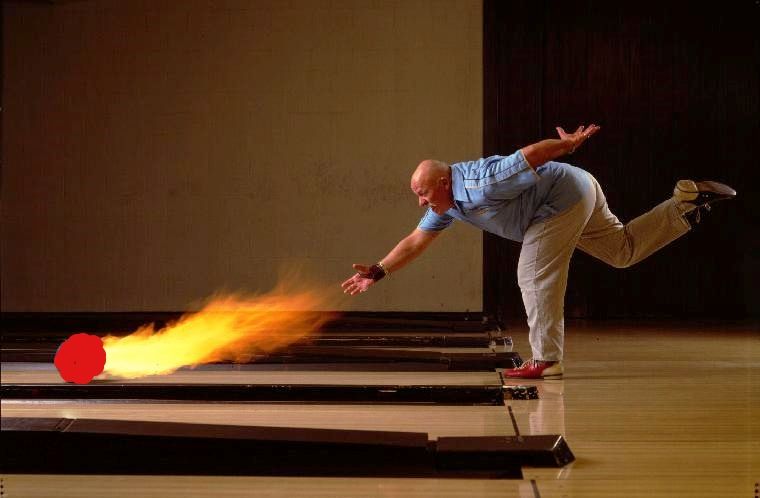Yes, you could easily have wood lanes with slicker "conditions" than synthetic lanes.
I've bowled on older wood lanes (well maintained and badly maintained ones), newly resurface ones, old wood lanes with a overlay (the worst combo you can bowl on), synthetics mounted on top of wood lanes, synthetics mounted directly to the lane foundation, several different brands of synthetics (there all different).
So have seen many different conditions.
Wood lanes are softer and have more texture than synthetics which are harder, balls will tend to hook sooner and have less backend (the reaction evens out). The Older wood lanes are, affects how they hold the oil, plus the heads are usually worn (Speed and loft helps then).It was my understanding that wood is on the extreme end of that spectrum.
Synthetics are harder (but there are differences between brands in hardness, textures, etc. also how old they are.) and that lets the ball slide easier down the lane. That's why you want the ball to read the lane (see the friction) earlier, so you use less speed, less loft, a more aggressive ball etc.
Synthetics when wet are very slick, but when they breakdown or dry to begin with, they can hook more than wood. That's why you have to look at the lane conditions being used.
What you just said there .I mean, sure...dry plywood would be less slick than wood lanes...but I've only seen synthetic lanes behave "drier" than wood lanes once...and that was after a Thanksgiving weekend when it was fairly clear they hadn't been oiled since the Wednesday before the Thanksgiving weekend.
Bowl knows more than me...I just have never seen it.
Having limited experience on different lane types and conditions isn't a bad thing, you got start some place. It's just when someone starts making general conclusions based on that limited knowledge base that things get out of whack.
















Bookmarks